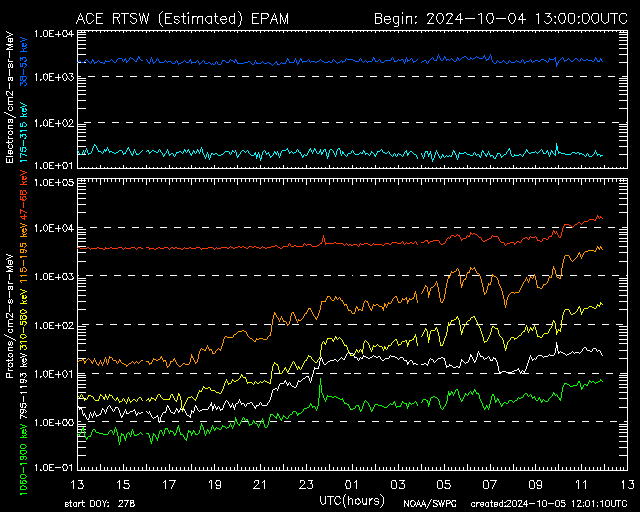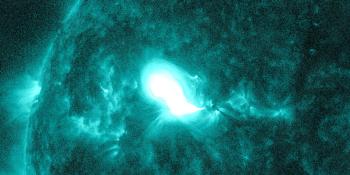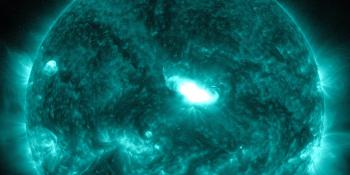Incoming CME, G3 geomagnetic storm watch
sobota, 5 października 2024 12:09 UTC

The anticipated CME from the X7 solar flare has turned out to be a nothing-burger. There was no notable impact and aurora displays were confined mostly to arctic latitudes.
However, the coronal mass ejection from the X9 solar flare which was the strongest solar flare of the current Solar Cycle thus far has of course yet to arrive. The low energy protons as measured by ACE EPAM continue to rise indicating the shock wave approaching towards our planet with an impact expected in 6 to 12 hours from now which would be today between 18 UTC and midnight UTC. A strong G3 geomagnetic storm watch remains in effect for this evening and tomorrow.

Thank you for reading this article! Did you have any trouble with the technical terms used in this article? Our help section is the place to be where you can find in-depth articles, a FAQ and a list with common abbreviations. Still puzzled? Just post on our forum where we will help you the best we can!
Najnowsze wiadomości
Najnowsze wiadomości z forum
Wesprzyj SpaceWeatherLive.com!
Wielu ludzi odwiedza SpaceWeatherLive aby śledzić aktywność słoneczną lub sprawdzić czy jest szansa na zaobserwowanie zorzy polarnej. Niestety, większy ruch na stronie oznacza większe koszty utrzymania serwera. Dlatego, jeśli jesteś zadowolony ze strony SpaceWeatherLive, zachęcamy do wspierania nas finansowo. Dzięki temu będziemy mogli utrzymać naszą stronę.

Fakty na temat pogody kosmicznej
| Ostatnie rozbłyski klasy X | 2024/11/06 | X2.39 |
| Ostatnie rozbłyski klasy M | 2024/11/13 | M1.7 |
| Ostatnia burza geomagnetyczna | 2024/11/10 | Kp5+ (G1) |
| Dni bez plam słonecznych | |
|---|---|
| Ostatni dzień bez skazy | 2022/06/08 |
| Średnia miesięczna liczba plam słonecznych | |
|---|---|
| października 2024 | 166.4 +25 |
| listopada 2024 | 166 -0.4 |
| Ostatnie 30 dni | 163.2 +18.4 |


